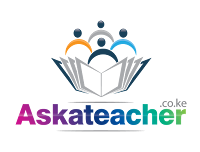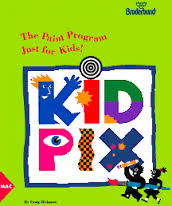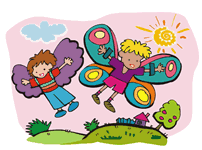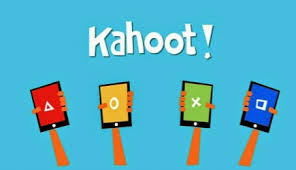Wednesday, September 21, 2016
Book Review: Integrating Educational Technology into Teaching
Annotated Bibliography
Roblyer, M.D. & Doering, A. (2013). Integrating Educational Technology into Teaching. Pearson, 454 pp.
M.D. Roblyer has been focusing on teaching with technology for almost 40 years. Roblyer has written numerous books, articles and essays on the topic of technology's benefits for teaching. She first began exploring these benefits in 1971 as a graduate student at Pennsylvania State University.
Roblyer is currently a Adjunct Professor of Instructional Technology and Distance Education at Nova Southeastern University.
A. Doering is an associate professor in the Learning Technologies program at the University of Minnesota. Doering has served on many different editorial books and actively speaks on topics of adventure learning, engagement and motivation. His main focus is on how to design and develop adventure learning environments.
Doering has always appreciated a healthy learning environment and the importance of it. He has worked inside middle and high school classrooms, as well as with the National Geographic Society.
Integrating Education Technology into Teaching gives teachers ideas on how we can better prepare ourselves for using technology in the classroom, focusing primarily on the proper use of computer technology. Various websites are given as examples, allowing the reader to explore and have more of a "hands on", learning experience. Different ideas on how to incorporate technology into curriculum is also discussed and explored.
Book Review
I have to give this book a 2 thumbs up. The book was easy to navigate through when searching for specific definitions and/or topics and proved to include beneficial and up to date information in regards to relevant technology in the classroom. I can see however, that this book can quickly become outdated, given the constant innovative technology that is being incorporated in the classroom. This book would need to be revised and reviewed, regularly.
I believe that teachers would find this book helpful, one to keep on their shelves in the classroom. The book does a good job in providing specific websites and software applications to use, which gives teachers a clear idea on what were reading and learning about. The book covers how to integrate technology across the curriculum as well as how to use and understand technology tools for 21st century teaching. These two topics, in my mind are huge, as it is our job to keep students innovative, up to date, and in tune with our ever changing world and standards.
Roblyer, M.D., & Doering, A. H. (2013). Integrating educational technology into teaching. (6th ed.). Uppersaddle, NJ: Pearson.
Reference
Tuesday, September 13, 2016
Teaching Resources Webpage
Hi There!
My name is Lauren and I am currently in the midst of receiving my Masters in Education as well as my teaching credential. My focus is multiple subjects, in hopes of teaching the 3rd grade. I have a beautiful two year old daughter, named, Parker Genevieve, and a handsome 12 year old labordoodle named, Joey.
I am eager and excited to venture out into the teaching world, coming from a background with the DoD, I know I love to help people, and there is nothing more fulfilling than teaching the future of our nation! The purpose of my web page is to provide various sites and resources that help teachers and teachers-to-be to easily access information in regards to curriculum (3rd grade), differentiated instruction and technology in the classroom. I hope my site helps some of my fellow teachers and teachers-to-be, and I wish you the best of luck!
Sincerely,
Lauren Smoogen
laurensmoogen@yahoo.com
Curriculum Resources:
My name is Lauren and I am currently in the midst of receiving my Masters in Education as well as my teaching credential. My focus is multiple subjects, in hopes of teaching the 3rd grade. I have a beautiful two year old daughter, named, Parker Genevieve, and a handsome 12 year old labordoodle named, Joey.
I am eager and excited to venture out into the teaching world, coming from a background with the DoD, I know I love to help people, and there is nothing more fulfilling than teaching the future of our nation! The purpose of my web page is to provide various sites and resources that help teachers and teachers-to-be to easily access information in regards to curriculum (3rd grade), differentiated instruction and technology in the classroom. I hope my site helps some of my fellow teachers and teachers-to-be, and I wish you the best of luck!
Sincerely,
Lauren Smoogen
laurensmoogen@yahoo.com
Curriculum Resources:
This site provides free lesson plans, training videos, website reviews
as well as online training for tech ed. in the classroom. The site allows you
to communicate with other teachers and review various “how to”, articles.
This site is easy to navigate through and provides a clear idea on the
Common Core Standards and Expectations in the state of California. It’s a great
way to make sure you are creating appropriate lesson plans within proper
criteria.
This is a great tool to help incorporate differentiated instruction, evaluate
student’s current skill sets and comfortably teach math skills at a pace that
works for each individual student.
This resource is great because it keeps students up to date on
current events, it also provides easy to navigate resources for students who
need to research various world, national, or even, sports topics!
http://quizstar.4teachers.org/
This site allows you to create quizzes, even in multiple languages, for free. The quizzes can be completed online or printed out.
DIFFERENTIATED INSTRUCTION:
http://www.education.com/worksheets/third-grade/grammar/
Education.com, helps students at a 3rd grade level, prep for writing projects. This site also helps 3rd graders better understand grammar, using colorful worksheets. This site also provides games, work books and lesson plans.
http://www.pbs.org/parents/education/science/games/elementary/
Various, fun and interactive games allowing students to explore and learn.
https://www.mackiev.com/kidpix/index.html
This site is a presentation software tool but for the students. The kid-friendly features include: 3D backgrounds, animations, path animations and video narration. Drawing and painting creativity allows children to tell stories.
https://www.teachingchannel.org/
This site provides resources on how to incorporate differentiated instruction into the classroom.
http://quizstar.4teachers.org/
This site allows you to create quizzes, even in multiple languages, for free. The quizzes can be completed online or printed out.
DIFFERENTIATED INSTRUCTION:
http://www.education.com/worksheets/third-grade/grammar/
Education.com, helps students at a 3rd grade level, prep for writing projects. This site also helps 3rd graders better understand grammar, using colorful worksheets. This site also provides games, work books and lesson plans.
http://www.pbs.org/parents/education/science/games/elementary/
Various, fun and interactive games allowing students to explore and learn.
https://www.mackiev.com/kidpix/index.html
This site is a presentation software tool but for the students. The kid-friendly features include: 3D backgrounds, animations, path animations and video narration. Drawing and painting creativity allows children to tell stories.
This site provides resources on how to incorporate differentiated instruction into the classroom.
A site that shows teachers how to use Project Based Learning in the
classroom. The site provides different tips and resources on using differentiated instruction in the classroom.
TECHNOLOGY:
Five tips that help teachers who may struggle with using technology in the classroom. These steps are easy to read, to the point and apply to every classroom.
This site provides free tools for teachers, including tutorials and links that teach teachers how to incorporate technology in the classroom. The site is easy to navigate through and provides various resources that applies to all subjects and lesson plans/ideas.
This easy to use site generates "word clouds" and can be used in any language. It's a great tool that makes learning new words fun and easy, through different colors, schemes, themes and fonts. It's perfect for the 3rd grade English learning, level.
A site that provides technology-rich learning resources for 3rd graders. The site includes resources covering; science, math, social studies and English.
This fantastic site allows you to create your own learning game in any subject. It's a great way to keep students excited and engaged in learning.
Saturday, January 23, 2016
Extrinsic and Intrinsic Motivation
Extrinsic Motivation: Doing something to avoid negative consequences. The reward is avoiding
the consequences.
Intrinsic Motivation: You do something because you love doing it, that in itself, is the reward.
The most fun I ever, ever, ever had in school was when I decided to go BACK to school (whaaaaat? Who does that?) Why did I WANT to go BACK to school? I have a desire. To teach. I have a desire to better myself. Going back to school after about 16 years of completed school, is my intrinsic motivation. I am doing it for myself, I am doing it for my daughter, your daughter, your son, I am doing it because of this quote that hangs above my computer day in and day out; "Perhaps no profession is more vital to the future of this nation than teaching".
As a result, my courses are fun for me. They aren't a burden. It's food for thought. And I have been blessed with professors whom I give great credit for adding to school being my intrinsic motivation and not extrinsic. Most of my professors thus far have been inspiring, interested, and invested. As a result, I am motivated. As the video Motivation and Learning, by Dr. Linda Ventriglia shows: "The more pleasant learning is, the more motivated students are." My courses have all incorporated differentiated learning, which means, I have had the opportunity to express and transfer my knowledge in ways that best suite me and allow me to shine. As a result, learning and demonstrating what I have learned has been fun, rather than intimidating, dull or mundane. Another contributor to my inspiration to perform are my fellow classmates. The weekly posts allow us peers to communicate, collaborate, share ideas and praise one another. No negative feedback is allowed, only praise, "Praise is most powerful when success is attributed to effort rather than ability" ( Dr. Linda Ventriglia, Motivation and Learning). I am inspired to perform because I am excited for my end goal, and I know that during my journey I have people who are here to support me, guide me and give me the gentle push that I need, when I need to be redirected.
Now, a very different experience. Algebra. I have always, and most likely, will always be afraid (actually afraid), of mathematics. I am afraid of math, the way some are afraid of the Dentist. I avoid it at all cost, even if it causes me harm in the end. Why? Because the idea of attempting it and failing makes me feel bad, very bad. It doesn't feel good. As a result, nothing about math is fun for me, I only do it when I have to. Math is very much my extrinsic motivation (yuck). But we need math. Math is all around us. The homes and buildings we live and work in, the shopping and saving we do, how much we eat versus burn. It's everywhere. And the reward of math is being successful inside and outside the classroom. Although there IS reward, it is still not FUN going through the process of OBTAINING that reward.
A particular year-long-incident, was my Sophomore year of high school. Good old, Algebra welcomed me with open, intimidating, Frankenstein arms. I started off the year, sitting in the back, avoiding contact with my teacher, crying over homework, I could not complete and cursing the people who ever came up with the theory of Algebra. It truly was miserable. I hated Monday, Wednesday and Fridays with an actual passion. And then, I took action. I got a tutor. A gentleman named Mike.
Mike, loved math. Math was Mike's intrinsic motivation (weird, I know). Mike and I spent the first two weeks of my tutoring going on walks. He would talk about how math was all around us, how we used math subconsciously. During these walks and talks, he never pointed out what he was referring to, he waited for me to see it on my own. Those first two weeks was the most beneficial time I could have possibly gained from Mike the Tutor. It was during the first two weeks that without being asked, I saw on my own, the use and benefits of math. Then, back at the pencil and paper, Mike remained patient, he remained kind and he never, ever, stopped praising my EFFORTS.
Soon, math stopped looking like a monster under my bed, and actually started looking pretty useful and sometimes even...well...fun. By November of Sophomore year, I had moved to middle of the class seating, and started receiving B's instead of F's. After winter break, I was front seat and coming up to the class to demonstrate my A work. Although my teacher was proud of my efforts, he was also proud of himself, as he fully believed he had done something to change how I learned math. Now my teacher, was a good man and an OK teacher, but in reality, he hadn't changed a single thing for me. What and how he taught in September, was hardly different than how he taught in November and January. My math teacher didn't teach me algebra. It was how I VIEWED algebra that had changed. And it was Mike the Tutor, who helped me get there. Viewing Algebra differently, allowed me to learn it differently. To this day for as much as I cringe thinking about math, I welcome a good algebra problem. It really is actually fun.
As a teacher, I want to be a Mike the Tutor. Someone who gave me the praise I needed, even with the wrong answers, praise because he saw the sincere effort. And now that I have completed this weeks assignments, I see that Mike used a strategy. He used the 3 Ps:
For as much as Coach King was a good man, he wasn't the best math teacher. If I see a student dramatically improve their demonstration and understanding of their learning, and I haven't done anything differently, I would like to reach out and see what they have done differently, and see how that may help other students and my current teaching style. My goal is to make learning fun for my students. To keep them engaged, invested and passionate about what they are learning. Every learner has a unique learning style and incorporating those teaching methods into my lectures and activities will help ensure that I am reaching out to every one of my students.Pause and have a discussion with the students on why they are having difficulty. Prompt the student with a cue on how to improve. Praise the student with implementation of the cue.
So now, I leave you with the quote I started with, "Perhaps no profession is more vital to the future of this nation than teaching". How and why does it motivate you? Is it extrinsic or intrinsic for you? And are you a Coach King, or a Mike the Tutor?
References:
You Tube.
Intrinsic and Extrinsic
Motivation in Education Definition Examples. (Published, March 4, 2015). Retrieved on
January 23rd, 2016, from: https://www.youtube.com/watch?v=sPDCdGgjxfc
National University. Motivation and Learning
(Published, 2007). Retrieved on January
23rd, 2016, from: https://nu.blackboard.com/webapps/blackboard/content/listContent.jsp?course_id=_21082_1&content_id=_1360261_1&mode=reset
21st Century Communication Skills: The 4 Cs in our Elementary Classrooms
The 21st century
skills are a set of abilities that students need to develop in
order to succeed in our information-based economy. Although these skills have
always been important for students, they are especially important now, in our
ever growing and changing world and economy. Our students need new skills for
new jobs, they need to keep up, as a result, so do their teachers.
"The
American Management Corporation reports that employers want workers who can
think critically, solve problems creatively, innovate, collaborate, and
communicate." -Thoughtful Learning
"'The
New York Times reports that low-skilled workers are being laid off and
"turned away at the factory door and increasingly becoming the long-term
unemployed . . .' This issue results from a disparity between the skills that
worker have and those that employers need." -Thoughtful Learning
"The National Academies
indicate that “The danger exists that Americans may not know enough about
science, technology, or mathematics to contribute significantly to, or fully
benefit from, the knowledge-based economy that is already taking shape around
us.” - Thoughtful Learning
Alarming isn't it? So let us discuss and come to better understand the necessity, and use of the 4Cs.
1) Communication
 "Students
must be able to communicate not just with text or speech, but in multiple
multimedia formats. They must be able to communicate visually through video and
imagery as effectively as they do with text and speech. Communication is a broad term that incorporates multi-faceted
levels of interaction and imparting information to others. Students love to
communicate using technology, and this is an essential part of Media Fluency. But it’s more than just being able to
effectively use digital media—it’s about personal interactions as
well" Global
Digital Citizen.
"Students
must be able to communicate not just with text or speech, but in multiple
multimedia formats. They must be able to communicate visually through video and
imagery as effectively as they do with text and speech. Communication is a broad term that incorporates multi-faceted
levels of interaction and imparting information to others. Students love to
communicate using technology, and this is an essential part of Media Fluency. But it’s more than just being able to
effectively use digital media—it’s about personal interactions as
well" Global
Digital Citizen.
Do we even have to ask why effective communication is essential to teach? You can find countless seminars, books, presentations and lectures on all of the reasons why this is such a significant, life long skill. You need skillful communication to land a job (during interviews), to keep a job (meetings, emails, professional correspondence with fellow employees and clientele), healthy relationships with spouses, friends and family. The way you communicate says a lot about you. Without effective communication a message can be misunderstood and lead to arguments, frustrations, mistakes, unemployment and strained relationships.
Successful, professional and healthy communication help students strive while collaborating, you need to be a good communicator in order to be a good team mate. Communication, can also often be creative, which makes an individual engaging, stimulating, interesting and fun. All wonderful qualities to have in a friend, team mate, and employee. All qualities can be useful during interviews, proposals, meetings and socializing. Good communication skills also include verbal, written and listening skills.
Communication is a practiced skill. You get better with proper use and time. Reading, writing and presenting information are all effective ways to learn, use/transfer and better understand successful communication. Vocabulary is essential in communication. There are different ways you can add communication practice into your classroom activities: 1) Play a phonetics games in class. 2) Divide students up into small groups, each reading a page in their assigned story. Then ask the students to discuss amongst themselves the summary of the story, while completing a Q&A assignment sheet. 3) Have each student stand at the front of the class (or sitting down), and take the time to answer questions about themselves from their fellow classmates. 4) Ask students to group together and practice their assigned weekly vocabulary list by acting the word out and/or creating sentences with the word.
2) Collaboration

"Students must possess the ability to collaborate seamlessly
in both physical and virtual spaces, with real and virtual partners
globally" Global Digital Citizen.
Collaboration asks you to take responsibility. You are held accountable in your team, if you
were to let the ball drop in your court, you could inevitably be letting the
entire team and your project down too. Learning how to collaborate successfully and
effectively will help students in both their college and working careers.
Working well with others is essential in today's world.
3) Critical
Thinking
 "Students
need the ability to think analytically, which includes proficiency with
comparing, contrasting, evaluating, synthesizing, and applying without
instruction or supervision. Analytic
thinking means being able to use the higher end of Bloom’s Digital Taxonomy, known as the HOTS , or
higher-order thinking skills" Global Digital Citizen.
"Students
need the ability to think analytically, which includes proficiency with
comparing, contrasting, evaluating, synthesizing, and applying without
instruction or supervision. Analytic
thinking means being able to use the higher end of Bloom’s Digital Taxonomy, known as the HOTS , or
higher-order thinking skills" Global Digital Citizen.
Critical
thinking is a decision making process used to solve problems. We use
critical thinking in our every day lives, whether it be at home, in the
classroom, on the playground, or in a working environment. Critical
thinking is based on logical reasoning and evidence. Because it used
and needed daily, employers expect and demand that their employees carry
strong critical thinking skills. Critical thinking also allows you to be a
better team player, which flows back into effective collaboration skills,
"It allows you to be a better listener and collaborator when you’re
working as part of a group, as well as to become more flexible in your problem
solving. Plus, focusing on logical reasoning rather than on emotion or
interpersonal team dynamics helps you check your ego at the door. That
way, you more easily can be a valuable part of a team" -dsst.
4) Creativity
 "Students
need to be able to think and work creatively in both digital
and non-digital environments to develop unique and useful
solutions." Global Digital Citizen
"Students
need to be able to think and work creatively in both digital
and non-digital environments to develop unique and useful
solutions." Global Digital Citizen
Students
who create and complete rewarding projects and meaningful tasks are able
to overcome challenges in imaginative ways.
Diagram showing how the 4Cs flow together:
Adding the 4Cs into our classroom ensures that
we as educators are keeping up with today's society, economy and
world. Our world, is not the same as it was yesterday, it certainly won't be the same "tomorrow". The 4Cs are life long essential skills for both inside, and outside
the classroom, work place and every day society. The 4Cs also
comply beautifully with the Common Core State Standers:
"The 4Cs,
a fundamental aspect of the most rigorously-designed projects, are emphasized throughout the
CCSS in a variety of ways.
 "Students
must be able to communicate not just with text or speech, but in multiple
multimedia formats. They must be able to communicate visually through video and
imagery as effectively as they do with text and speech. Communication is a broad term that incorporates multi-faceted
levels of interaction and imparting information to others. Students love to
communicate using technology, and this is an essential part of Media Fluency. But it’s more than just being able to
effectively use digital media—it’s about personal interactions as
well" Global
Digital Citizen.
"Students
must be able to communicate not just with text or speech, but in multiple
multimedia formats. They must be able to communicate visually through video and
imagery as effectively as they do with text and speech. Communication is a broad term that incorporates multi-faceted
levels of interaction and imparting information to others. Students love to
communicate using technology, and this is an essential part of Media Fluency. But it’s more than just being able to
effectively use digital media—it’s about personal interactions as
well" Global
Digital Citizen.
"Students must possess the ability to collaborate seamlessly in both physical and virtual spaces, with real and virtual partners globally" Global Digital Citizen.
 "Students
need the ability to think analytically, which includes proficiency with
comparing, contrasting, evaluating, synthesizing, and applying without
instruction or supervision. Analytic
thinking means being able to use the higher end of Bloom’s Digital Taxonomy, known as the HOTS , or
higher-order thinking skills" Global Digital Citizen.
"Students
need the ability to think analytically, which includes proficiency with
comparing, contrasting, evaluating, synthesizing, and applying without
instruction or supervision. Analytic
thinking means being able to use the higher end of Bloom’s Digital Taxonomy, known as the HOTS , or
higher-order thinking skills" Global Digital Citizen.  "Students
need to be able to think and work creatively in both digital
and non-digital environments to develop unique and useful
solutions." Global Digital Citizen
"Students
need to be able to think and work creatively in both digital
and non-digital environments to develop unique and useful
solutions." Global Digital Citizen
·
In Literacy, almost 90% of the
reading standards are driven by higher order critical thinking verbs such as
analyze, compare and distinguish.Similarly, these verbs describe what is
required of students when they address a rigorous Driving Question in a
project;
·
In Mathematics, the standards call for
the real-world problem-solving and communication of ideas that are hallmarks of
PBL;
·
In ELA, Speaking and Listening standards
call on students to “engage effectively in collaborative discussions” –
essential when students work in project teams – and “use technology to interact
and collaborate with others”;
·
Speaking and Listening standards also
ask students to make presentations that “present claims with well-chosen
evidence” – such as their answer to a project’s Driving Question – and “use
well-produced multimedia or visual displays,” when students present project
work to an audience;
·
Speaking and Listening standards expect
that by 12th grade students will be able to engage in conversations that
“promote creative and divergent perspectives” – like those they might have when
discussing different ways to answer a Driving Question or create a product for
their project" - P21.
It makes sense that our students must use the 4Cs doesn't it? To keep up? Be ahead, even. Yet, most of our educational systems remain traditional and are set in their routine of teaching for yesterday, instead of tomorrow. Hardly seems fair to our future leaders. Something to think about...
References:
Global Digital Citizen
Foundation. The Critical 21st Century Skills Every Student Needs and
Why. Retrieved on January 22, 2016, from:
https://globaldigitalcitizen.org/critical-21st-century-skills-every-student-needs
Thoughtful Learning. What
are 21st century skills? Retrieved on January 22,2016,
from: https://k12.thoughtfullearning.com/FAQ/what-are-21st-century-skills
dsst. Critical Thinking: What
Is It and Why Is It So Important? Retrieved on January 22, 2016,
from: http://getcollegecredit.com/blog/article/critical_thinking_what_is_it_and_why_is_it_so_important
P21. Is there a Best Way to Develop the
4CS in All Students? Retrieved
on January 22,2016, from:
http://www.p21.org/news-events/p21blog/1249-is-there-a-best-way-to-develop-the-4cs-in-all-students
Wednesday, January 6, 2016
Teaching and Learning Styles
Hello! My name is Lauren and I am currently obtaining my teaching credential
and master’s in education/best practice through National University. This
course is my fifth course at National and second course in my master’s
program (a tad intimidating).
I am a mother to a beautiful 19-month old daughter named, Parker Genevieve, wife, avid reader and hiker. One of my most favorite places to hike is in Mammoth Mountain, CA, as seen below.
Although I am not currently teaching, I am looking forward to the opportunity of reaching out to children and helping them achieve their dreams. I understand more than anything, in order to do so, I must help them believe in themselves. I believe that my passion for learning and recently revisiting the concept of being a student myself, will help me relate to my future class on a more even playing field. Learning, I believe, should be engaging, fun, and creative. In order for learning to be all of these things, to all of our students, we must contribute the method of Differentiated Instruction. Differentiated Instruction allows diverse learners to actively engage in their process of learning and demonstrating their knowledge. I am a firm believer in allowing students to choose their method of demonstrating their knowledge; whether they prefer to write a paper, create a power point presentation, blog, or poster board; there are many ways a child can show you what they have learned, and do it in a way that suits, excites and provokes their individualized passion and interests. After all, that is what learning is all about.
Based on the learning and teaching style survey's provided in Week One's board; I scored "High" on being collaborative, dependent, competitive and a participant learner, and "Moderate" in being avoidant and independent. As a result, I feel as though my personality connects to almost all of the different learners I would have in my classroom, I would just need to focus a little bit more on students who prefer independent learning and shying away. Again, allowing students to choose how they wish to demonstrate their work, as well as creating an equal balance between group work and independent work, I believe I can successfully engage every student and help them meet their educational needs.
Below are some examples of a method and softwares I intend on using, once I am teaching 3rd grade:
Teaching Matters: Scaffolding
Creating small group workshops for different area subjects such as: literature, music and math etc., will allow me to detect each student's strong and weak points. Having students on the same playing field working together, will provide them the support they need. For example, in a reading group; we would read through the context, stop and then discuss key vocabulary words to ensure each student has comprehended the material appropriately. Once this has been established, we would move on. ELL students, and/or students with special needs will be given extra practice, increased time and elaborate learning strategies. Advanced students can work together together to on advanced material (they should not be given more work, only more advanced work), or help their peers who may need some extra practice.
With technology being widely incorporated in the classroom these days, it's getting easier, and easier to provide students with special needs, opportunities to learn, engage and demonstrate their knowledge, equally with their peers. Software's such as: BrainPOPJr. (web based learning tool), CLick Speak (a text to speech function designed for sighted users who want to hear text heard a loud) (www.clickspeak.com), and Click-N-Type (a virtual computer providing an alternative to a traditional keyboard to which some students with physical disabilities may not have access.) (www.clickntype.com), can help all students on various levels keep up and remain engaged.
Subscribe to:
Posts (Atom)



















